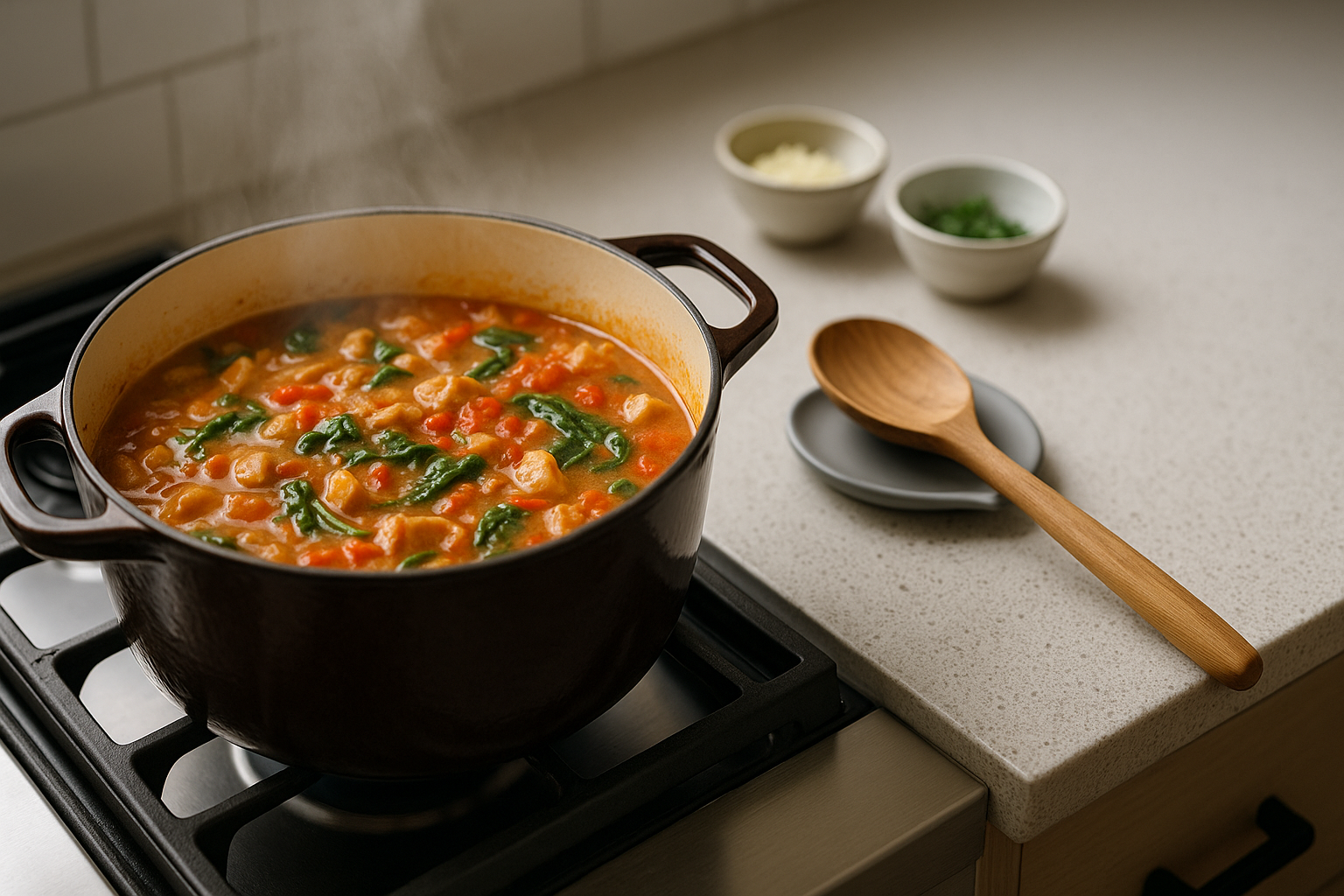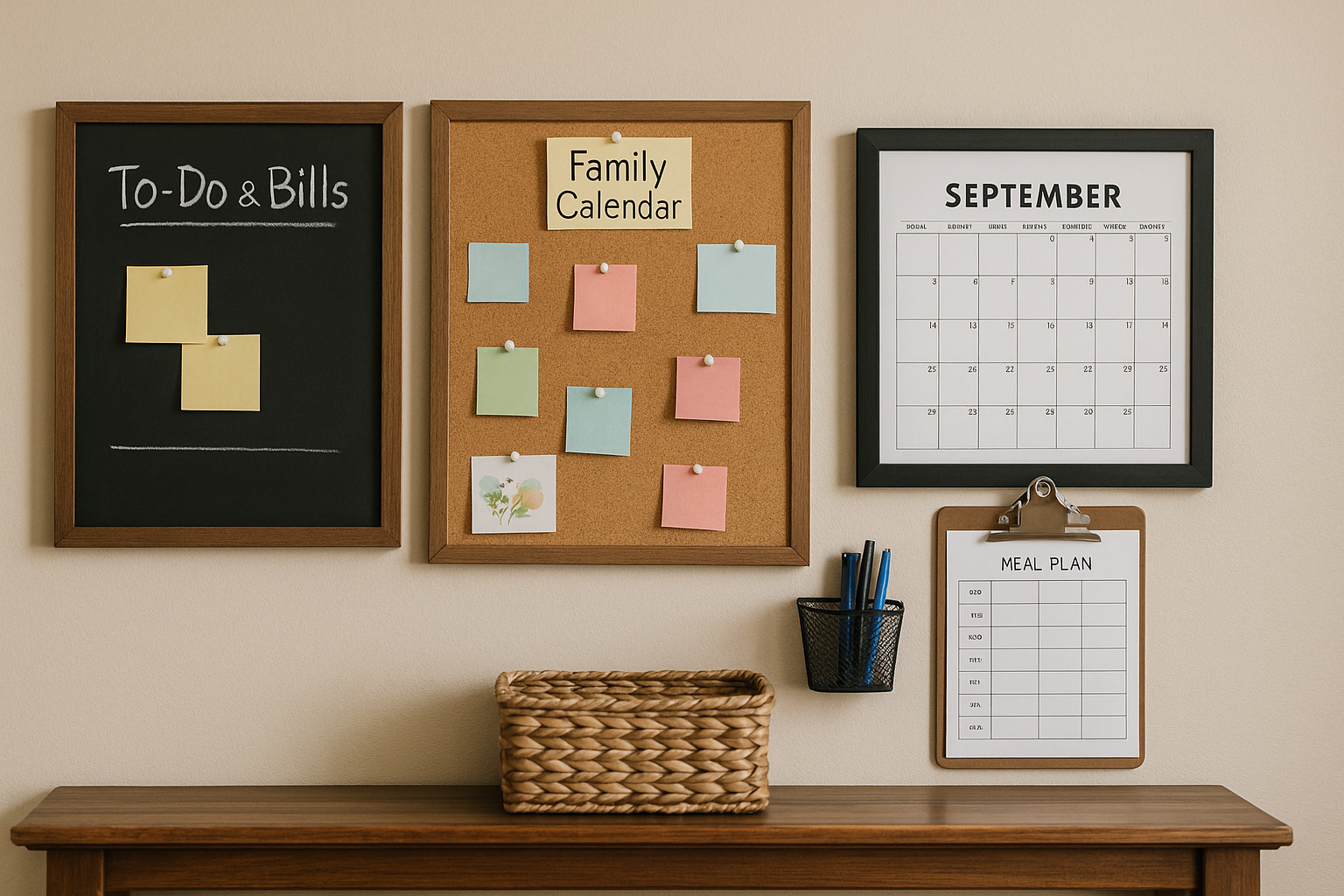Short on time but still want dinner that tastes like you tried? Meet your new best friends: one-pot meals. These easy cleanup recipes deliver bold flavor with minimal mess so you can enjoy quick family dinners on even the busiest nights.
In this guide, you’ll get five flexible one-pot ideas, smart prep shortcuts, and cleanup hacks that leave your sink empty in—yes—under two minutes.
Why One-Pot Meals Work
Cooking everything in a single pot concentrates flavor, streamlines prep, and slashes dishes. Fewer pans means less heat loss and faster cooking. And because starches often finish right in the sauce (think rice, pasta, or potatoes), they absorb seasoning instead of watering it down.
5 One-Pot Dinners to Put on Repeat
1) Lemon-Garlic Chicken & Orzo
Sear bite-size chicken in olive oil until golden. Add minced garlic, orzo, a splash of white wine (optional), and chicken broth. Simmer until orzo is tender. Finish with lemon zest, parsley, and a knob of butter. Bright, cozy, and table-ready in 20 minutes.
2) Smoky Chickpea & Spinach Stew
Soften onions with smoked paprika and cumin. Stir in canned chickpeas, crushed tomatoes, and vegetable broth. Simmer 10 minutes; fold in baby spinach to wilt. Swirl in yogurt or tahini for creaminess. Serve with crusty bread for a meatless win.
3) Creamy Tomato Tortellini Skillet
Add store-bought cheese tortellini to a deep skillet with marinara, water, and a splash of cream. Simmer until pasta is plump and sauce thickens. Toss in a handful of spinach and grated Parmesan. Kids cheer, dishes disappear.
4) Ginger-Scallion Salmon & Rice
Rinse jasmine rice and place in a pot with water, grated ginger, and salt. When rice is nearly done, nestle salmon fillets on top, cover, and steam 6–8 minutes. Finish with scallions and a drizzle of soy-sesame sauce. Clean, fragrant, and weeknight-fast.
5) Sausage, Cabbage & Mustard Potatoes
Brown sliced sausages, then add shredded cabbage, thinly sliced potatoes, and broth. Cover and cook until potatoes are tender. Stir in Dijon mustard and a splash of apple cider vinegar. Peppery, satisfying, and unapologetically simple.
Prep Shortcuts for Quick Family Dinners
- Use pre-chopped helpers. Mirepoix, bagged slaw, and washed baby greens shave 10 minutes off prep.
- Lean on concentrated flavor. Tomato paste, curry paste, miso, and pesto build instant depth without long simmering.
- Toast first, simmer second. Briefly toasting spices, grains, or pasta in the pot unlocks nutty notes for richer results.
- Finish with an acid. Lemon juice or vinegar right before serving brightens any one-pot dish.
Pantry Blueprint for Easy Cleanup Recipes
Keep these on hand and dinner nearly cooks itself:
- Grains & starches: orzo, rice, small pasta, potatoes
- Canned goods: chickpeas, tomatoes, coconut milk, tuna
- Flavor stash: garlic, onion, paprika, cumin, soy sauce, Dijon
- Fresh finishers: lemons, scallions, parsley, baby spinach
How to Truly Clean Up in Under 2 Minutes
- Line as you go. Use a silicone spatula and a fitted lid—no splatter, no baked-on bits.
- Deglaze the pot. After cooking, splash in water or broth while it’s still hot and scrape; this becomes a rinse that lifts fond before it sticks.
- Soak smart. Fill the pot with hot water and a drop of soap immediately. While you plate and eat, residue releases itself.
- One tool policy. Cook with one wooden spoon and a chef’s knife; rinse both during the deglaze step.
Conclusion
With a stocked pantry and a few clever techniques, one-pot meals make it effortless to serve quick family dinners and get your kitchen back in minutes. Choose one recipe above, set a timer for 25, and enjoy the rare pleasure of great food with almost no cleanup.





